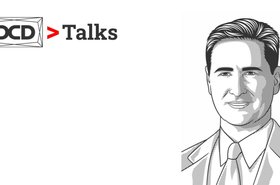At our recent DCD>Connect event in Virginia, USA, Emma Brookes caught up with Marshall Sorenson of Shockey Precast, a specialist in prefabricated concrete structures with years of experience in the data center construction industry, and an independent subsidiary of Metromont.
Sorenson begins by telling us how in the construction industry, speed and agility are key:
"It's a hyper-competitive world these days. And if you're not on the front row to the pole position, you just can't be nimble enough to react to those changes or deal with what's happening to you. Speed to market is an attitude thing, and we don't know when that green flag is going to drop exactly, but we know it's going to drop… and we know where we want to be when it does."
The biggest enemy of that agility is often other contractors who don’t work to those same speeds. It has caused Shockey to adapt to accommodate late information: “We frequently have projects where the mechanical, electrical, plumbing stuff just isn't figured out – they can't go as fast as we can go, it's more complicated, and there's more stuff that they've got to figure out.
“They just want to know, Well, where can we penetrate your walls? And where can we put openings and your double tees, and where can't we do those things? So we created cut zones and no-fly zones, basic stuff that any eighth grader could understand and say, you do anything you want to do, you just can't do it here. And those were part of the design rules that we developed early on.”
Sorenson warns that to get the best out of your project, it's vital to involve companies like Shockey as early as possible and get their expertise in design-assist:
“If you're not involved meaningfully, early in the life of the project, you don't have a prayer of getting the things you need, so we do what we need to do to grab everybody's ‘best thing’. The importance of design can't be overstated. I would say the difference between effective design assistance and no design assistance is the difference between everything and nothing. It's that important.”
We ask Sorenson what changes to the market he expects AI to bring. Surprisingly, the new realities have touched even the world of prefabricated concrete: “The distance between servers is really important for true AI because they talk to each other. When you have servers 1,200 feet away from one another and a one-story building, that's okay.
“It's better if they're 600 feet apart in a two-story building, it's even better yet if they're 300 feet apart in a three-story building. So there's this densification, that goes hand in hand with AI, which is the fat part of the bat for an all-precast building, which is going to get these great loads and a much smaller space and a taller building. That's perfect for us. It's almost as if we get to write the script there.”
You can find more words of wisdom from Sorenson on the challenges of pre-manufacturing in an ever-changing world by listening to the entire interview which is available here.

